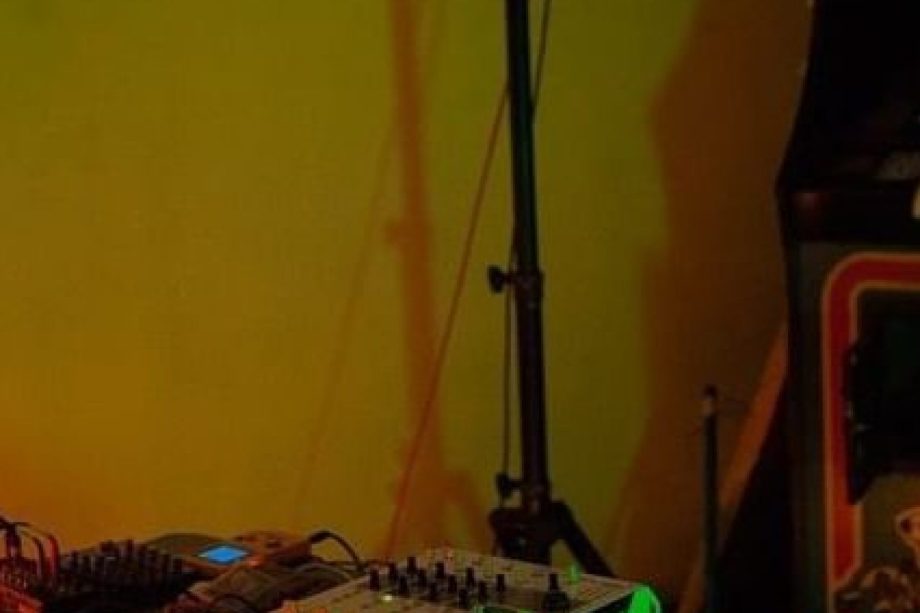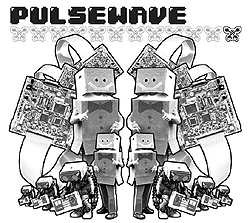Do you remember chiptune concerts?



Info: The inaugural Pulsewave and the first chiptune event held at this particular location of The Tank. Read about how this came to be in this long post.
Media Coverage: TBA
Watch the entire show
Editor: For the DVD release of the 2PlayerProductions documentary, Reformat the Planet, Peter Swimm was asked to recount how Pulsewave happened. The letter is reposted in its entirety as it was written then, with light edits.
I was always interested in the raw sounds of early video games. I tried numerous tactics for emulation and reference to classic game sounds in synth-punk bands in my teens, but I did not try to recreate these songs in the nostalgic sense. Rather, it was a way to reconcile game music with my other musical interests: punk, new wave, metal, and surf.
It was all mostly a dalliance for me until I moved to the New York City area in late 2003. I had already known of the burgeoning NYC scene before then, thanks to the internet, but it would be a few more months until I could make it to my first chip show at a little Midtown theater space called The Tank. The two chip artists on the bill that night, Mark Denardo from Chicago and Bit Shifter [Josh Davis], could not be more different from each other. Bit Shifter, who was on stage as I arrived, had a very electronic style, with bits and pieces assembled from diverse styles like industrial and drum ‘n bass, as well as a melodic, almost early-California melodic punk vibe. It was the sound itself that floored me as the deep bass filled the room with his energetic and engaging presentation. Denardo’s performance later solidified just how open the landscape could be. The whole set was weird and wonderful, often bordering on performance art with strange cardboard masks, oft-kilter between-song banter, and songs full of bizarre and unreliable narratives. Seeing two very different artists on the bill was liberating and gave me much hope for creating something new.
Both Bit Shifter and Denardo where very personable and open to hearing my own music, and later, when I gradually met the other members of this New York crew, this openness proved to be the expected norm. While there was no formal affiliation for these group of artists, there existed a kind of mutual aid society as each leaned on each other for shows and exposure. Nullsleep [Jeremiah Johnson] was slowly raising the profile of his 8bitpeoples netlabel with artists from around the world releasing tracks for free-to- the-net community. Despite this growing profile, shows seemed hard to come by for a majority of artists, with many of the opportunities seeming to be either novelty DJ sets at various gallery openings or random bar shows in equally random locations. By late in the year, Denardo had moved to New York and we began working on an electro-rock chip hybrid band named OMAC. I ended up playing guitar and we set about making tracks by passing a Game Boy back and forth. By the time we recruited a drummer, the problem of where we could showcase this type of music seemed obviously inescapable.
The first glimmer of something big developed almost by mistake. Bit Shifter and Nullsleep had been fliering for a massive 6-band show featuring an impressive lineup of local and international acts when the police picked them up for a little know law against posting fliers. They were processed, having everything taken from them except, oddly enough, their cell phones. Undeterred, the duo posted live updates of the dilemma to various social networking sites. The buzz resulted in excellent publicity as the venue hosting the show was packed and marked the first time people were turned away from a chip gig for fear of violating the fire code. Aside from illustrating our haphazard marketing attempts, it proved there was indeed a demand for the music as people who attended the show would come again and again as long as they knew when and where to be.
Over holiday drinks with Bit Shifter, I bemoaned the lack of regular gigs and the relatively low profile we all seemed to have once the article buzz had died out. Agreeing that we needed a regular event driven by the artists themselves, Davis suggested contacting The Tank about the issue. In a stupor, I agreed…then promptly forgot about it. Shortly after the holidays, an email arrived from Mike Rosenthal, artistic director of The Tank. He had heard of my drunken boasts and gave me the chance to curate a monthly series of chip music shows.
The format of the showcase, named “Pulsewave,” came together surprisingly quickly. Three bands somewhat related to the chipmusic genre would play along with one or more visualists to tie the event together. A sincere attempt would be made to have at least one new artist a month and at least one person from the region or outside the NY clique. Admission would, at all costs, be capped at $5 to bring a crowd, a feat that simply would not have been possible in a commercial venue like a club or bar but worked great at The Tank. All in all, it took less than one month for the first installment to come together.
Something new to me was the idea of a VJ playing visuals behind the artists. At first, I was dubious of the added visual punch’s need, but visuals artists would surface one by one who shared the same infatuation with 8bit visuals as we did with the sounds. NOTENDO, Paris Graphics, and NO CARRIER were three of the vjs that graced our stage early. Their visual elements became an immediate and iconic part of the live chip music experience.
When a film crew asked to document the proceedings, I was dubious. Still, Pauls and Asif quickly became part of the NYC chip family, providing great coverage of the early shows and giving much-welcomed internet publicity to the monthly events with the videos they released. Some nights were funny, with camera crews making up half or more of the crowd, but we are glad to have those early days documented in this DVD you are holding right now.
In hindsight, it wasn’t until after the first Blip Festival in 2006 did Pulsewave really take off with a proliferation of curators and greater diversity of acts that now participate in the event. Now with a devoted group of people behind it, Pulsewave has truly become a community-owned collaboration, and I can focus again on my own music and chip music news blog True Chip Till Death. It has also led to the formation of sister events across the U.S., such as 8static in Philly, Dutycycle in San Francisco, and others popping up in Austin, Portland, Boston, and more. Still, almost 100% community-backed, the U.S. chip music scene is doing as well as ever, and it is good to see the monthly chip night model form roots in other locations. The future of chip music may yet be unclear, but one thing is certain: as long as it is fun, we will all keep doing it, for the love of the chip sounds and the camaraderie that comes along with it is its own kind of reward.
Thank you for your time,
Peter Swimm
Editor, True Chip Till Death
Musician
Pulsewave Founder